Four grad students, postdoc earn prestigious NSF fellowships

Four UT Southwestern graduate students – including two starting this fall – have earned three-year fellowships from the National Science Foundation (NSF) Graduate Research Fellowship Program (GRFP). A Neuroscience trainee also won a prestigious Postdoctoral Research Fellowship in Biology (PRFB), awarded by the NSF’s Directorate for Biological Sciences.
Two other UTSW graduate students received honorable mentions from the GRFP, a significant academic achievement that provides access to advanced computing and data resources.
Designed to support outstanding graduate students pursuing research-based master’s and doctoral degrees, the five-year GRFP includes a $37,000 annual stipend for three years plus a cost-of-education allowance of $12,000 to the institution. Established in 1952, the GRFP is the oldest graduate fellowship of its kind. Only about 10% of applicants are chosen. Past GRFP awardees include 42 Nobel Laureates and more than 450 members of the National Academy of Sciences.
The PRFB encourages independence early in a career in collaboration with sponsoring faculty mentors. It provides $80,000 per year – a $60,000 stipend and a $20,000 allowance for research and training – to 60 talented scientists based on individually submitted plans that address important questions in biology.
“We are delighted with UT Southwestern’s showing in this year’s awards, and we look forward to helping each of our honorees reach their full potential,” said Andrew Zinn, M.D., Ph.D., Dean of the Graduate School of Biomedical Sciences and a Professor in the Eugene McDermott Center for Human Growth and Development and Internal Medicine.
Here are snapshots of those recognized and information about their research, in their own words:
NSF PRFB Award
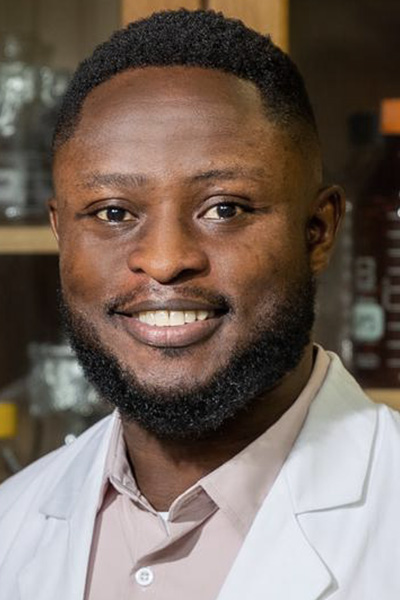
David E. Ehichioya, Ph.D.
Department of Neuroscience
Lab of Shin Yamazaki, Ph.D.
Project summary: Our circadian time-keeping system is complex. Every cell in every organ of the body has a clock. It is known that the central pacemaker that orchestrates rhythm in behavior and physiology is located in the brain’s hypothalamus. We believe that there are other pacemakers nearby, and my goal is to find them.
What do you love about science? Science provides knowledge that helps us understand things that are difficult to explain.
What interests you most about science? I am excited about science because of the joy of figuring out something that no one has before.
Why did you choose UTSW? I selected UTSW because it is home to renowned experts in circadian biology, including my mentors, and for its research facilities.
On giving back to the community: As a recipient of the NSF fellowship, I am grateful for the support I have received from the public and feel a sense of responsibility to give back. I hope to do this by supporting and mentoring the next generation of scientists.
On outreach: I aspire to increase the participation of underrepresented groups in biology by sharing knowledge of circadian rhythms and the experience gained in conducting my research through educational outreach that will empower underrepresented people in science.
GRFP awards
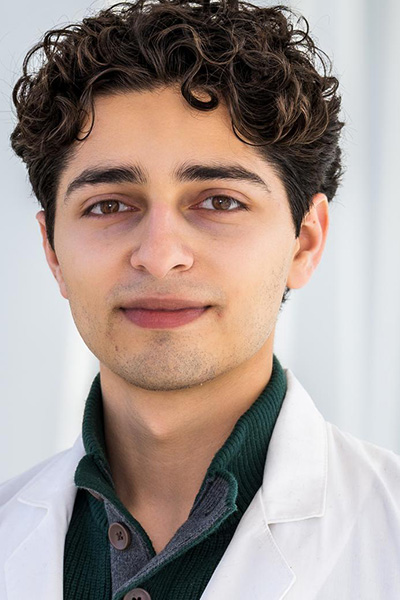
Anthony M. De Maria
First-year student this fall
Molecular Microbiology Graduate Program
Lab to be determined
Project summary: I am studying how innate immunity mechanisms at the cellular level are activated and utilized in response to viral infection. In particular, I am working to uncover the species-specific differences in conserved antiviral proteins that lead to distinct affinities and effectiveness for fighting different viruses.
How did you find UTSW? I was first introduced to UTSW as a high school student via the STARS (Science Teacher Access to Resources at Southwestern) Summer Research Program for Students. From this experience I came to understand the vast resources, pioneering faculty, and unique learning ecosystem present at this institution. I’m coming to graduate school from UTSW’s Postbaccalaureate to Ph.D. (PB2PHD) Program, which gives college graduates up to two years of additional lab experience to reinforce the transition to graduate school.
On outreach: I hope to encourage high school and college students from all backgrounds to participate in research experiences and to connect them with the incredible opportunities of the STARS, SURF (Summer Undergraduate Research Fellowship), and PB2PHD programs. I plan to do this by giving research talks to local underserved schools.
What do you love about science? The increasing sense of awe and wonder that arises from better understanding how something works.
How did you get interested in science? My fascination with the life sciences stemmed from regularly watching TED talks during middle school and high school. I enjoyed learning about the development of cutting-edge molecular therapeutics and how many scientific discoveries were achieved by way of unforeseen circumstances.
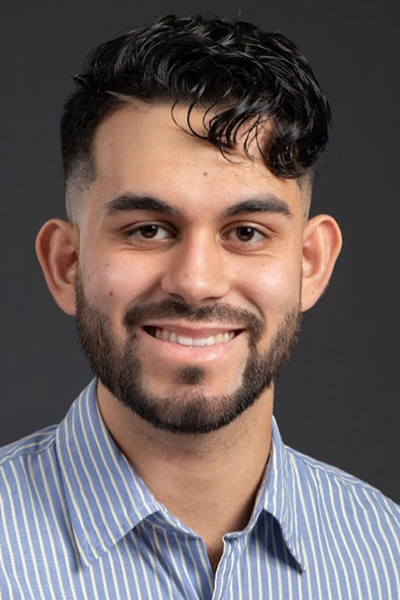
David Guarin
First-year student this fall
Graduate program and lab to be determined
Project summary: What sets a neuron apart from other cells in the body is its ability to generate action potentials, also known as nerve impulses. A tight coordination of gene and protein expression is required for that to happen. I’m interested in understanding what the molecular mechanisms underlying neuronal activity are and how they go wrong in disease.
What interests you most about science? The exciting part of doing biomedical research is being able to contribute to our basic understanding of how our bodies work.
How did you choose UTSW? When I was applying to graduate school, I had my sights set on California. Once I interviewed and did my revisit at UTSW, I found a level of camaraderie, authenticity, and dedication to student learning that I hadn’t experienced at the other institutions I visited. I knew I had to come to UTSW.
On inspiring future generations: I was the founding President for the Minority Students Association for Life Sciences at Boston University and oversaw, in collaboration with other student groups at BU, a virtual high school outreach event. At UTSW, I’m hoping to host similar programming where high school students can freely interact with graduate students, postdocs, and professors to get an idea of what a career in science is like.
On effecting change: Being a leader takes courage, and most people will be turned off by the possibility of failure. However, to make a change in your community (graduate school, local community, state, etc.), the first step is standing up and making your voice heard. You’ll be surprised by how people share your ideas.
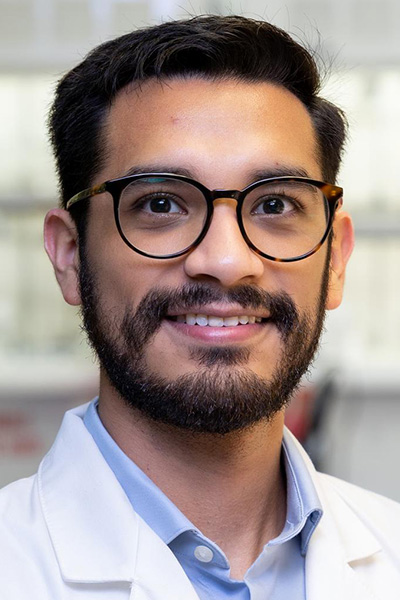
Erick Guerrero
Second-year student
Biological Chemistry Graduate Program
Lab of Daniel Siegwart, Ph.D.
Project summary: My research focuses on lipid nanoparticles (LNPs), the technology that enabled the mRNA COVID-19 vaccines. I want to understand how we can use it to accurately target major organs like the liver, lungs, and spleen with a simple injection. A deeper understanding of this technology could lead to novel, less-invasive treatments for disease.
How did you choose UTSW? Once I found my place in science, I knew I had to use this passion to help develop something beneficial in the biomedical field. I found that UTSW was perfect for me since I could work at the biology-chemistry interface with the opportunity to do translational research. Knowing that our work in the lab could shape the development of new therapeutics is something that you cannot find that easily this early in a scientific career.
What excites you about research? I think of science as a never-ending puzzle. You can see the big picture of what you want to accomplish, but the way that you get there is what makes it interesting. The need to constantly explore new areas and learn things to see your goals take shape is very rewarding.
On inspiring future generations: I’m currently working with the Biochemistry Diversity, Equity, and Inclusion Committee to bring science demonstrations to young students in the Dallas Independent School District. My goal is to show students that becoming a scientist is a career path that can be fulfilling and enjoyable.
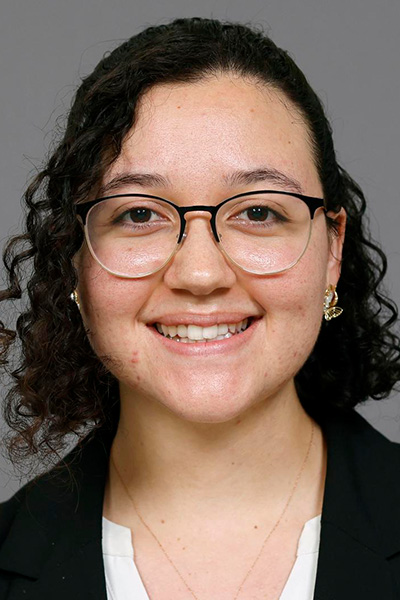
Samantha Sakells
First-year student
Molecular Microbiology Graduate Program
Lab of Kevin Forsberg, Ph.D.
Project summary: Bacteria and phages – viruses that attack bacteria – have been locked in an arms race for billions of years with each entity evolving to fight the other. I am studying how phages developed counterattack strategies to infect bacteria.
What do you enjoy about science? I love learning new mechanisms behind basic scientific concepts to understand the microbial world. Phages are the most abundant biological entity on Earth. It is very exciting to learn more about them. I want to share new ideas and results with the rest of the scientific community. I am very passionate about scientific writing and communication, which I hope to incorporate into my future career.
How did you get interested in science? Nobody in my family went to college, making it difficult for me to understand what a career in science entailed. However, this changed when I shadowed a biomedical engineering graduate student at the University of Texas at El Paso as a high school student. I learned what it meant to be a scientist and [about] the career opportunities available in this field. This inspired me to pursue a Bachelor of Science in cellular and molecular biochemistry and now a Ph.D. in molecular microbiology.
Why did you choose UTSW? I chose to pursue my Ph.D. here at UT Southwestern because I was impressed by the rigorous science and ample resources available for biomedical research. I participated in the SURF Program at UTSW in 2021, working with Sebastian Winter, Ph.D., formerly of the Microbiology Department. Immediately after joining this program, I knew that I wanted to attend graduate school at UTSW.
The following students received honorable mentions:
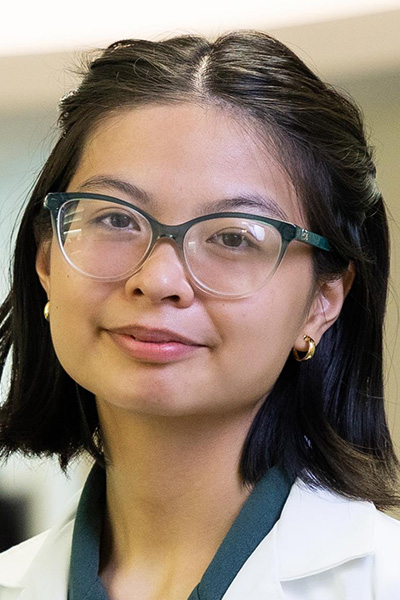
Kaitlynn Gov
Second-year student
Cell and Molecular Biology Program
Lab of Mike Henne, Ph.D.
Project summary: My research focuses on the mechanisms of fat transport within different compartments of the cell, which is important for maintaining its structure and managing energy reserves. I hope my research will lead to greater understanding of basic biology as well as cellular metabolism.
What excites you about science? I love science for the same reasons I like to watch building construction. With some foundation, people come together to create something that’s useful and worth looking at. Additionally, it’s very satisfying to see projects progress over time.
I am always excited about the social and collaborative nature of science. There is something amazing about working with different experts to solve a problem of shared interest. I have always enjoyed the scientific process and the community. It is easy to like the field when you’re surrounded by the right people.
Describe your journey into science: I have always been supported by initiatives that support minorities and members of disadvantaged communities. Without these programs, I would not be as far as I am today. In the future, I want to be able to give back to my own community and allow people to experience some of the same opportunities that I have had.
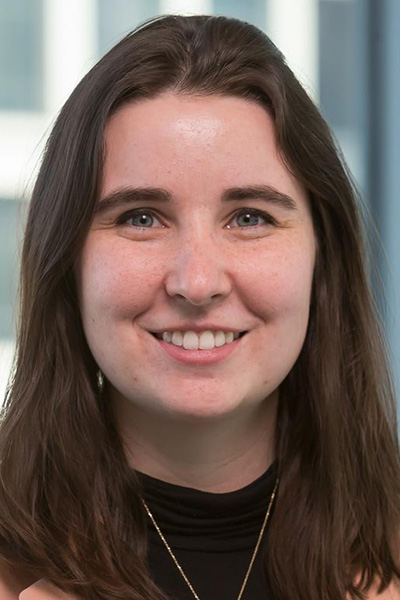
Emily R. Nettesheim
Second-year student
Genetics, Development and Disease Graduate Program
Lab of Katherine Wert, Ph.D.
Project summary: I investigate inherited retinal degenerative diseases at the molecular level, focusing on how disruption of communication between the light-sensitive cells at the back of the eye leads to disease. My goal is to identify therapeutic targets to preserve vision.
What do you enjoy about science? What I love about science is that there are no bad questions, and sometimes mistakes can lead to important discoveries. It is a field where you can really carve your niche and study what you are passionate about.
How did you get interested in science? It came from my family, who always encouraged me to ask the “how” and “why” questions from an early age. This really sparked my interest in wanting to understand the world around me. Eventually, the questions I asked were things that were mysteries to everyone. I decided I wanted to be the one to answer them, and the best way to do that is through scientific research!
On inspiring future generations: Since joining the UTSW community, I have been amazed at the number of opportunities available to me to participate in STEM outreach for students of all ages. I look forward to continuing to work with students to promote science education.
Note: Any opinions, findings and conclusions or recommendations expressed in this material are those of the authors and do not necessarily reflect the views of the U.S. National Science Foundation.
Dr. Forsberg is a W.W. Caruth, Jr. Scholar in Biomedical Research.
Dr. Henne is a W.W. Caruth, Jr. Scholar in Biomedical Research.
Dr. Siegwart holds the W. Ray Wallace Distinguished Chair in Molecular Oncology Research.
Dr. Zinn holds the Henry Ross Perot Distinguished Professorship in Biomedical Science and the Rolf Haberecht and Ute Schwarz Haberecht Deanship of the UT Southwestern Graduate School of Biomedical Sciences.

